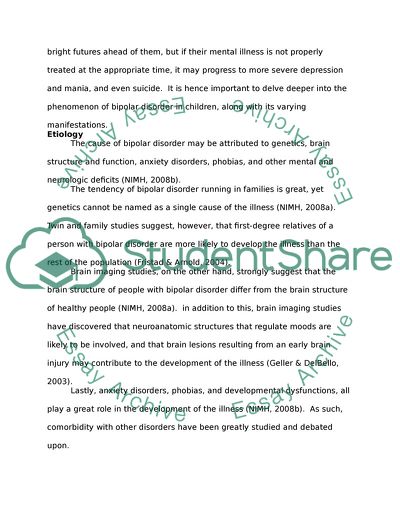Cite this document
(Bipolar Disorder and Children Coursework Example | Topics and Well Written Essays - 2000 words, n.d.)
Bipolar Disorder and Children Coursework Example | Topics and Well Written Essays - 2000 words. Retrieved from https://studentshare.org/health-sciences-medicine/1718803-children-w-bipolar-disorder
Bipolar Disorder and Children Coursework Example | Topics and Well Written Essays - 2000 words. Retrieved from https://studentshare.org/health-sciences-medicine/1718803-children-w-bipolar-disorder
(Bipolar Disorder and Children Coursework Example | Topics and Well Written Essays - 2000 Words)
Bipolar Disorder and Children Coursework Example | Topics and Well Written Essays - 2000 Words. https://studentshare.org/health-sciences-medicine/1718803-children-w-bipolar-disorder.
Bipolar Disorder and Children Coursework Example | Topics and Well Written Essays - 2000 Words. https://studentshare.org/health-sciences-medicine/1718803-children-w-bipolar-disorder.
“Bipolar Disorder and Children Coursework Example | Topics and Well Written Essays - 2000 Words”. https://studentshare.org/health-sciences-medicine/1718803-children-w-bipolar-disorder.


